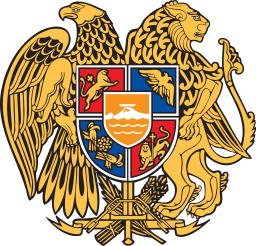The programs of the agricultural sector reforms: the press conference of Tigran Gabrielyan and Arman Khojoyan
The press conference of the RA Deputy Ministers of Economy Arman Khojoyan and Tigran Gabrielyan dedicated to the programmatic reforms of the agricultural sector took place at “Armenpress” press hall.
During the press conference, the Deputy Minister Arman Khojoyan touched upon the following topics.
- Support provided to agriculture
According to the information provided by the Central Bank, 16,200 loans worth 23 billion AMD were provided within the framework of the 2nd measure for neutralization of the Coronavirus-driven economic impact.
From the beginning of 2020 until today, 18,000 loans worth 37 billion AMD were provided within the framework of the state support to the agricultural sector. This figure is almost 3 times higher than the loans provided for the same period last year.
- Exportation and purveyance of agricultural products
The exportation process is quite smooth, agricultural products reach foreign markets on time. At the moment, 13,000 tons of apricots were exported from Armenia, about 3,200 tons of sweet cherries, 21,000 tons of tomatoes, 5,500 tons of apples, 800 tons of strawberries, in total 58,000 tons of fruits and vegetables.
Purveyance processes are also active: about 5,500 tons of fruits and vegetables were purveyed so far, of which 1,200 tons are vegetables.
- Wheat production
In 2019, the planting acreage of the autumn-sown wheat in Armenia were 56,000 hectares, and 3,000 hectares for the spring-sown wheat. The harvest of the autumn-sown wheat has already begun.
The government approved a state support program for promotion of the autumn-sown wheat production, the main goal of which, through partial compensation of the price of the autumn-sown wheat seeds, is to facilitate ensuring the accessibility of the seeds with high agricultural performance, increasing the crop productivity, promoting the crop rotation, and expansion of planting acreages.
The program will be implemented in Shirak, Syunik, Gegharkunik, Lori, Aragatsotn, Tavush, and Kotayk Marzes, as the wheat planting acreages in the mentioned regions make more than 90% of the total wheat planting acreages of the Republic of Armenia.
The beneficiaries of the program can be the farming households located in the afore-mentioned Marzes and cultivating 2-20 hectares of the wheat planting acreages, whereby the cumulative quantity of seeds obtained by each beneficiary within the framework of the support program cannot exceed 7,000 kg (maximum 350 kg per 1 ha).
The program provides a list of the seed varieties that are already registered with the seed agency. Only those seeds that have already been tested, certified, and registered by the relevant entity can be used within the framework of the program.
- Leasing of agricultural machinery
Specific changes have taken place in the agricultural machinery leasing program: the 20% down payment was replaced by 10%, whereby the other 10% is guaranteed by the government.
The Deputy Minister Tigran Gabrielyan presented the following programs.
- Establishment of slaughterhouses
The leasing program can now finance the mobile and modular slaughterhouses. For establishment of modular or mobile slaughterhouses in the designated areas the government will provide a grant of 4.8 million AMD, which will constitute 15% of the 20% collateral acquired through leasing.
According to the information provided by the RA Food Safety Inspectorate, there are currently 53 large slaughterhouses registered in the RA Register of slaughterhouse activity, of which 26 provide services, while 27 are for own production. At this stage, the Ministry is interested in the service-providing slaughterhouses.
- Bovine animals’ registration and numbering program
The bovine animals’ numbering program was also approved by the Government in June 2020.
Awareness campaigns will be organized by specific organizations prior to the actual numbering process. The process of numbering of bovine animals and digitization of data will be carried out by the “Center for Agricultural Services” SNCO, while supervision will be carried out by the RA Food Safety Inspectorate. It is planned to number 800,000 bovine animals this year, for which 1,600,000 ear tags will be purchased.
The program will contribute to establishment of bovine animals’ numbering and registration institute, the availability of an accurate database on the number and sex and age structure of bovine animals in herds, the surveillance of bovine animals’ movements throughout the country, and improvement of traceability.
BUSINESS ENVIRONMENT
(+374 11) 597 539
- BUSINESS ENVIRONMENT
- (+374 11) 597 539
TOURISM
(+374 11) 597 157
- TOURISM
- (+374 11) 597 157
QUALITY INFRASTRUCTURES
(+374 11) 597 167
- QUALITY INFRASTRUCTURES
- (+374 11) 597 167
PRODUCT LABORATORY TESTING
(+374 11) 597 166
- PRODUCT LABORATORY TESTING
- (+374 11) 597 166





